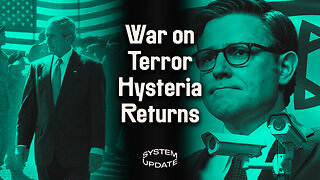Branch Davidians and the Bureau: The Catastrophe of the Waco Siege
The Waco siege was a 51-day confrontation between the Branch Davidian religious sect and the United States government that unfolded between February 28 and April 19, 1993. The tragedy claimed the lives of 82 people and has sparked debates and discussions about issues ranging from government overreach and religious freedom to the ethical use of force.
The roots of the Branch Davidian sect can be traced back to the Shepherd's Rod, also known as the Davidians, which itself emerged as an offshoot of the Seventh-day Adventist Church. Victor Houteff laid the foundation for this movement, prophesying the imminent return of Jesus Christ.
Following Houteff's passing in 1955, his widow Florence predicted Armageddon's arrival in 1959, which failed to materialize. Benjamin Roden, a former disciple of Houteff, soon took control of the Mount Carmel compound near Waco, Texas.
Roden established the General Association of Branch Davidian Seventh-day Adventists, or Branch Davidians, preaching moral enlightenment for Christ's return. The leadership baton then passed to his wife, Lois, before a power struggle erupted between their son George Roden and the charismatic Vernon Wayne Howell, later known as David Koresh.
Koresh's victory in this struggle would shape the group's destiny. Koresh attracted many new followers. However, his unorthodox practices were controversial. Claiming divine guidance, Koresh declared that he had been instructed by God to procreate with the women in the group, leading to the separation of married couples and a celibacy mandate for men other than himself. Koresh's name change from Vernon Wayne Howell to David Koresh carried biblical symbolism, invoking both Cyrus the Great and King David.
The Waco Siege had its origins in 1992 when suspicions arose about the Branch Davidians amassing illegal weapons. A UPS driver's report of a package containing grenades breaking open during delivery triggered alarm bells, prompting the McLennan County Sheriff's Department to involve the Bureau of Alcohol, Tobacco and Firearms (ATF). Reports of automatic gunfire from the Mount Carmel compound heightened concerns.
The ATF initiated covert surveillance, with agents assuming the guise of local technical college students. The ATF's suspicions culminated in a planned raid after obtaining a search warrant, alleging the modification of firearms for illegal automatic fire capabilities. The raid's execution was marred by shifting dates and a newspaper exposé about the sect.
The ATF's raid on a Sunday morning lost its element of surprise, thanks to a tip-off from a local TV reporter to the Branch Davidians. Chaos erupted into a firefight, with both sides blaming the other for initiating hostilities. The raid left four ATF agents dead and 16 injured, and killed six Branch Davidians.
Following the ATF's failure to resolve the situation, the FBI assumed control of negotiations. As negotiations dragged on, the FBI's patience wore thin, and Koresh's reluctance to surrender persisted. The FBI resorted to psychological warfare, blaring loud recordings and demolishing the compound's surroundings.
Koresh, declaring himself the Second Coming of Christ, resisted leaving. The FBI had reached a deal to release 19 children from the compound. The FBI later claimed these children were subject to physical and sexual abuse, which then prompted a plan to use tear gas to try to draw the group out of the compound.
On April 19, 1993, the FBI's blew holes in the compound's walls and pumped in tear gas. Fires soon engulfed the compound, and the blame for their ignition remains contentious. Only nine people escaped the inferno, while the rest, including Koresh, perished in the blaze. The aftermath was a somber tableau of destruction.
The Waco Siege's aftermath was characterized by intense public scrutiny and controversy. Questions abounded about the FBI's tactics, the media's role, and accountability for the lives lost. Criticisms spanned from negotiation strategies to allegations of excessive force, opening up discussions about government power, religious freedom, and the ethical use of force.
The siege's impact extended to crisis management and negotiation strategies, molding a complex understanding of how to handle such critical situations. The Waco siege continues to raise questions about the limits of government intervention and the preservation of individual freedoms.
Photo Credits - Michael Barera, Larry D. Moore, Acdixon, dtobias, Gigi Ibrahim, Andy Mabbett @ wikicommons
Music theme - Trumpets in Your Ears by Wowa & Chris Rede @unminus.com
-
 2:00:17
2:00:17
SNEAKO
7 hours agoSNEAKO X LAUREN CHEN
59K39 -
 1:12:09
1:12:09
Talk Nerdy 2 Us
4 hours ago🚨Cyber Siege: From White House Scandals to Global Cyber Threats 🚨
23.5K15 -
 26:49
26:49
Alexis Wilkins
11 hours agoBetween the Headlines with Alexis Wilkins: Michael Cohen on Tik Tok, Free Speech, AR Lectern, FDNY
27.7K19 -
 1:53:34
1:53:34
Fresh and Fit
23 hours agoSulaiman Ahmed And Destiny Debate Israel Palestine Conflict!
160K293 -
 1:35:13
1:35:13
Roseanne Barr
9 hours ago $12.26 earnedGuns And Chardonnay | The Roseanne Barr Podcast #46
61.4K117 -
 58:25
58:25
The StoneZONE with Roger Stone
7 hours agoWill America’s Population Die? Is America Caught In A Death Spiral? Kevin Dolan Enters The StoneZONE
41.8K43 -
 1:21:14
1:21:14
Glenn Greenwald
9 hours agoPost-9/11 "Terrorism" Hysteria Returns With a Vengeance | SYSTEM UPDATE #266
76.1K232 -
 1:09:36
1:09:36
Tucker Carlson
7 hours agoAdvice to Men: Reject Sex, Parties, and Fame. Embrace God Instead.
126K163 -
 2:39:51
2:39:51
ZeroHedge
8 hours agoThe Great Crypto Vs Gold Debate
43K22 -
 2:14:33
2:14:33
The Quartering
14 hours agoThe Heartbreaking State Of Men! w/ Better Bachelor
73.2K55